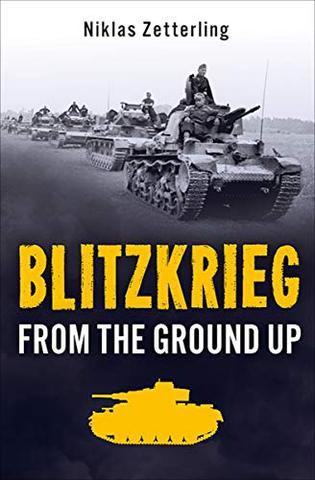Blitzkrieg From the Ground Up

Niklas Zetterling's work is typically well-worth your time. Blitzkrieg From The Ground Up is no exception to that general rule. It offers a unique take on German operations and tactics during World War II, mostly done via putting you in the war-time soldiers' driver's seat.
Now, you might say "what's so interesting about that?" There are countless books out there that describe what it was like to fight during the Second World War. However, what is unique here is that Zetterling is leveraging the after action reports (and other sources integrated with these reports in what is a very well researched book) as a vehicle to specifically show how it was German doctrine and training worked in practice to procude the battlefield successes of what is today commonly known as the 1939-1941 "Blitzkrieg" era.
There is quite a bit here to like here, even if you are well-read when it comes to combat operations conducted in Europe during the 1939-1941 period. And don't be turned off by the title. Zetterling very much hews to a well-researched and established conventional wisdom that portrays German military successes during the early part of the Second World War as an outgrowth of Prussian/German military war-making practices stretching back centuries in time. Meaning, not the product of some new sort of warfare invented during the 1930's after the Third Reich took power and then deployed for the first time in Poland in 1939 as many in the initial 40 plus years following the war's conclusion wrongly believed.
This book's greatest value lies in how it takes real life facts and circumstances and uses them to educate the reader on core concepts driving the German approach to tactics and operations. In addition, the book does a great job highlighting for the general reader the importance of well-developed tactical reconnaissance and the near-ubiquitous use of communications that helped drive the tactical victories that fueled larger operational achievements. The chapters on the Polish, Norwegian, and French campaigns of 1939-1940 are particularly notable in their value provided. The maps provided are well-placed, clear, and do a good job of geographically grounding the reader in the events being discussed. I have no hesitation recommending this book to my readers.



Post new comment